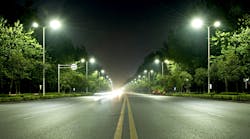Following up on confusion surrounding the American Medical Association (AMA) report last year raising concerns about the health effects of blue light, researchers at the Lighting Research Center (LRC) at Rensselaer Polytechnic Institute, Troy, NY, have released a study that aims to take a practical, quantitative approach to evaluating light sources for blue-light hazard.
Results of the study are published in the International Journal of Occupational Safety and Ergonomics, in an article titled, “Evaluating the Blue-Light Hazard from Solid State Lighting.” In that study LRC researchers John Bullough, Andrew Bierman and Mark Rea evaluated the spectral radiant power characteristics of incandescent, fluorescent, LED and daylight sources in terms of current blue-light hazard calculation procedures from the Illuminating Engineering Society (IES) and the Commission Internationale de l´Éclairage (CIE). The paper provides comparative data to allow meaningful and quantitative comparisons among light sources commonly experienced indoors and outdoors. Particular attention is given to use cases that could potentially affect blue-light hazard.
“The study results showed that in the majority of use cases, LEDs do not exhibit greater risk for blue-light hazard than other light sources, including incandescent. LEDs present no special concerns for blue-light hazard over other common light sources in typical use cases because our natural photophobic responses, such as squinting and averting the gaze, limit exposure to bright light. Where photophobic responses might not occur, such as during eye surgery or with premature infants, caution is needed,” the LRC release said.
Specifically on the question of correlated color temperature (CCT), where the AMA advised against lighting with CCT of greater than 3000K, the LRC study found that avoiding blue-light hazard is primarily related to controlling the radiance of light sources, and much less related to spectral distribution, particularly when expressed in terms of CCT.
The authors argue that CCT should not be used as a metric for characterizing the potential for blue-light hazard, citing the fact that an incandescent filament at 2856K within a clear bulb is associated with a greater risk for blue-light hazard than any white LED source, including one of 6500K. For general lighting applications, the study authors recommend the use of lenses, baffles, and diffusers to mitigate glare as the primary methods for reducing the risk of blue-light hazard.









